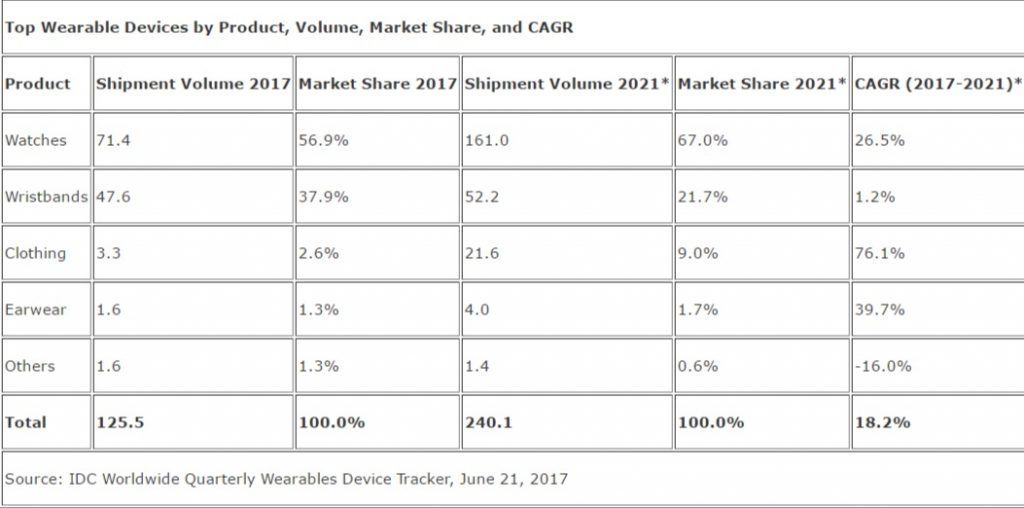
Wearable vendors will ship a total of 125.5 million wearable devices this year, marking a 20.4% increase from the 104.3 million units shipped in 2016, according to data from the International Data Corporation (IDC) Worldwide Quarterly Wearable Device Tracker. The wearables market will nearly double before reaching a total of 240.1 million units shipped in 2021, resulting in a five-year CAGR of 18.2%.
The research firm predicts that watches will account for the majority of all wearable devices shipped during the forecast period. However, a closer look shows that basic watches (devices that do not run third party applications, including hybrid watches, fitness/GPS watches, and most kid watches) will continue out-shipping smart watches (devices capable of running third party applications, like Apple Watch, Samsung Gear, and all Android Wear devices), as numerous traditional watch makers shift more resources to building hybrid watches. IDC anticipates a boost in volumes of smartwatches in 2019 as cellular connectivity becomes more prevalent on the market.

The sudden softness in the wristband market witnessed at the end of 2016 will carry into subsequent quarters and year. In addition, users will transition to watches for additional utility and multi-purpose use. IDC is also including smart clothing market as numerous vendors in China providing shirts, belts, shoes, socks, and other connected apparel. The upcoming release of Google and Levi’s Project Jacquared-enabled jacket stands to change that this year.
Ramon T. Llamas, research manager for IDC’s Wearables team said,
Since the market’s inception, it’s been a matter of getting product out there to generate awareness and interest. Now it’s about getting the experience right – from the way the hardware looks and feels to how software collects, analyzes, and presents insightful data. Expect digital assistants, cellular connectivity, and connections to larger systems, both at home and at work. At the same time, expect to see a proliferation in the diversity of devices brought to market, and a decline in prices that will make these more affordable to a larger crowd.
Jitesh Ubrani senior research analyst for IDC Mobile Device Trackers said,
It’s not just the end users who will benefit from these advanced devices,” said“Opportunities also exist for developers and channel partners to provide the apps, services, and distribution that willl support the growing abundance of wearables. From a deployment perspective, the commercial segment also stands to benefit as wearables enable productivity, lower costs, and increase ROI in the long term.
